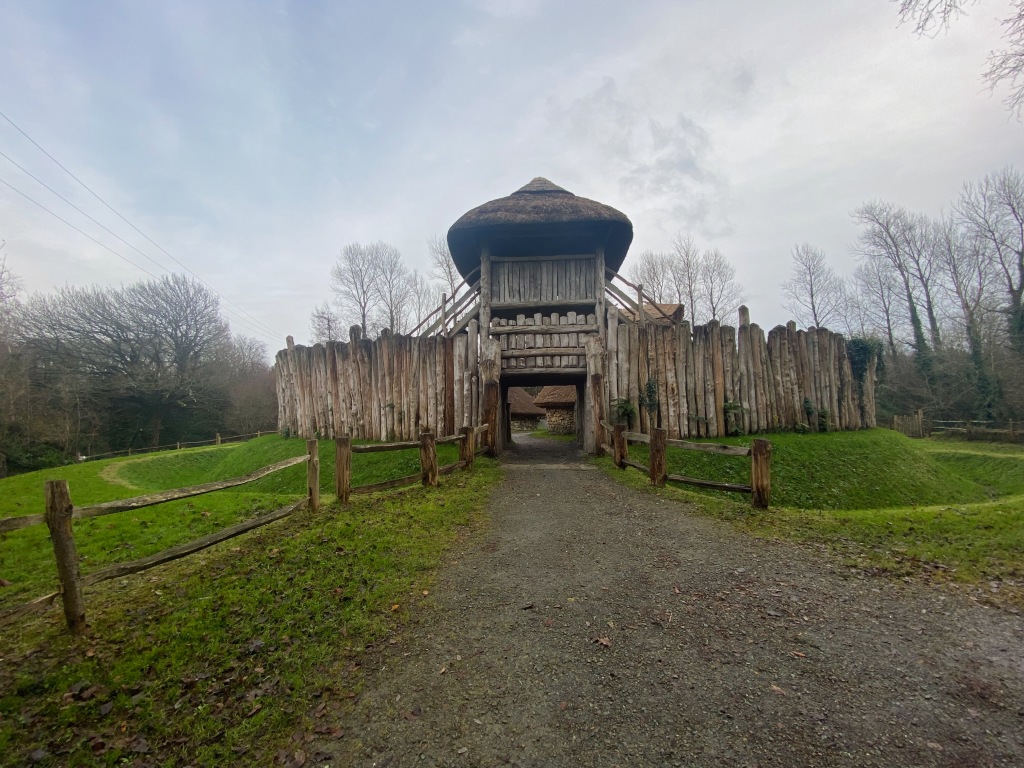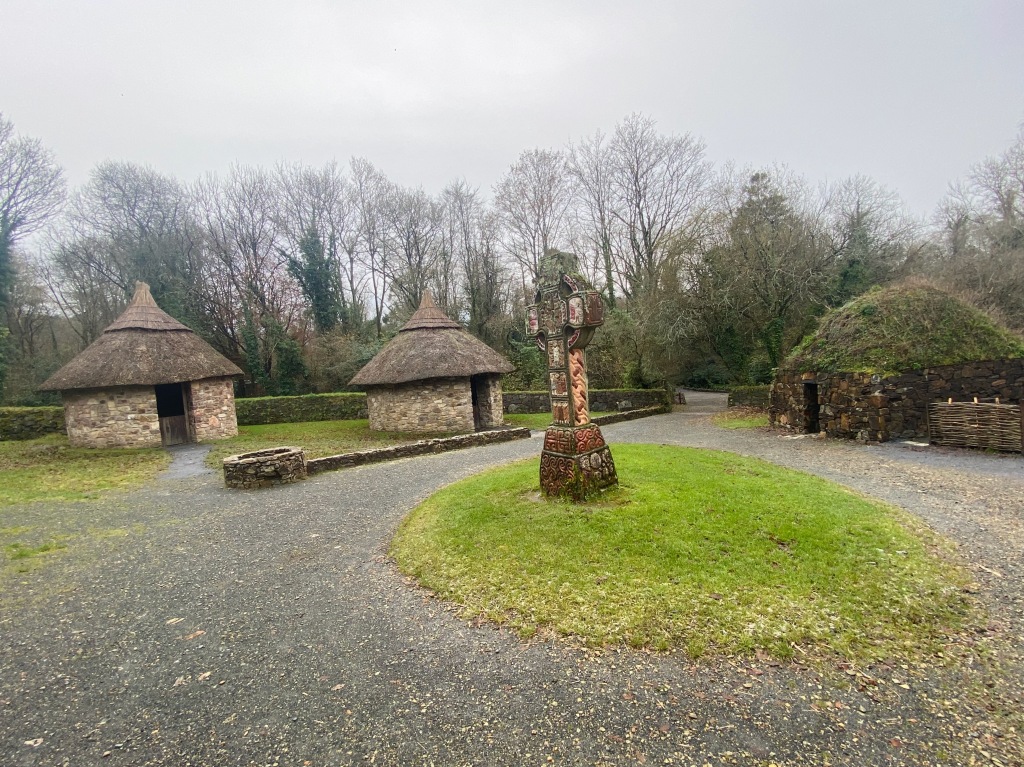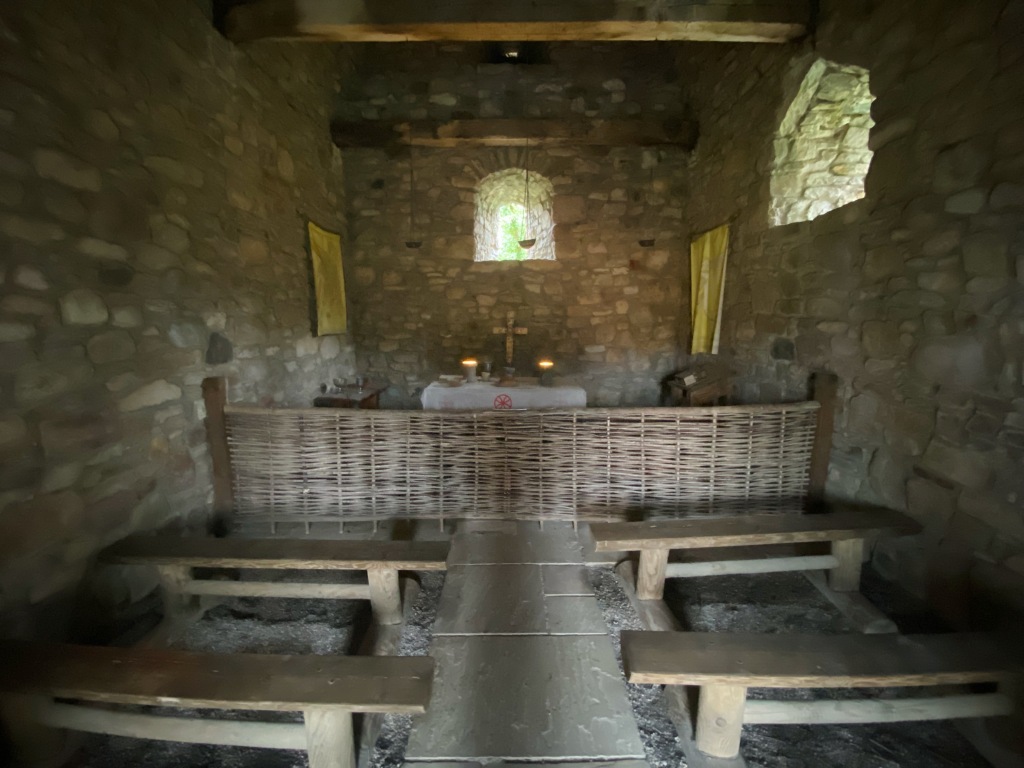
The Irish National Heritage Park is an open-air museum near Wexford which is part of Ireland’s Ancient East. It includes recreated sites ranging from the Mesolithic period up to the Norman Invasion

FIRST PEOPLE The reconstruction demonstrates a campsite from 9000 years ago and is based on remains found in various places


FIRST FARMERS Around 70 Neolithic houses are known from Ireland. The houses were built of timber and would range from 3 – 15 metres in length. The roofs were thatched and gabled and the houses were divided into two or three rooms

THE WORK OF GIANTS Archaeologists describe these monuments as megalithic tombs, but it is thought that this is only one of their functions. They could be territorial markers or used to track the movement of the sun and were places of worship. In Ireland, there are four types of megalithic tombs: passage tombs, court tombs, wedge tombs, and portal tombs

THE WITNESS TREE This 4000 year old Pinus Sylvestris, discovered in a bog in 1986, was donated to the park

THE BRONZE AGE BEGINS The Bronze Age lasted for 2000 years in Ireland and was a time in which warriors and combat was significant. New weaponry emerged as well as rich ornaments

HEAVEN AND EARTH A circle of this type was commonly built in the southwest of Ireland. It is formed of an uneven number of borders with two tall stones marking the entrance. Opposite the entrance, the lowest stone would be lying on its side. The circle is oriented on a northeast/southwest axis

A VOICE FROM THE PAST Ogham was said to have been invented by the god Ogmos. It’s based on the Latin alphabet. Each character represents a Latin letter as well as a different tree in Old Irish


FORT OR FARM? Inside the ringfort, there would be the main family house, an outhouse, animal pens and even beehives, a dunghill at the centre, and a variety of farm equipment. Some ringforts also had a souterrain which is an underground cellar





SAINTS AND SCHOLARS Christianity soon spread throughout Ireland. The monasteries were centres of learning, art, and political power

BREAD AND BEER In early Christian times, corn-drying kilns were used to dry corn slowly without burning, while the thatch would have kept everything dry. Wheat, rye, barley, and oats were grown in Ireland


THE MARCH OF PROGRESS The horizontal water mill was introduced to Ireland about 1400 years ago. Many mills were built along the sea, with the tide turning the querns. Wealthy farms and monasteries had their own mills, barns, and kilns, while smaller farmers would share

HOT STUFF A fulacht fiadh is a pit in the ground where water was boiled by dropping in hot stones. Most date from 4000 years ago, and they can be found all over Ireland

A PLACE APART – THE CRANNÓG An artificial island, a cranóg is made by layering soil, stones, bones, and brushwood in the shallows of a lake

VIKINGS! As seamen, traders, and statesmen, the vikings played a massive role in shaping the history of Ireland. Wexford is a vking city, with a viking name meaning harbour of the mud-flats

NORMAN CASTLES The first castles built by Normans in Ireland would have been made of timber and earth and painted white with lime. Later, they would be built with stone

ROUND TOWER The round towers are a feature of early Irish Christianity. They served as bell towers, treasuries, and a place of defence in case of attack. This Ferrycarrig Tower was erected in 1857 to honour the Wexford men killed in the Crimean War of 1854-1855
